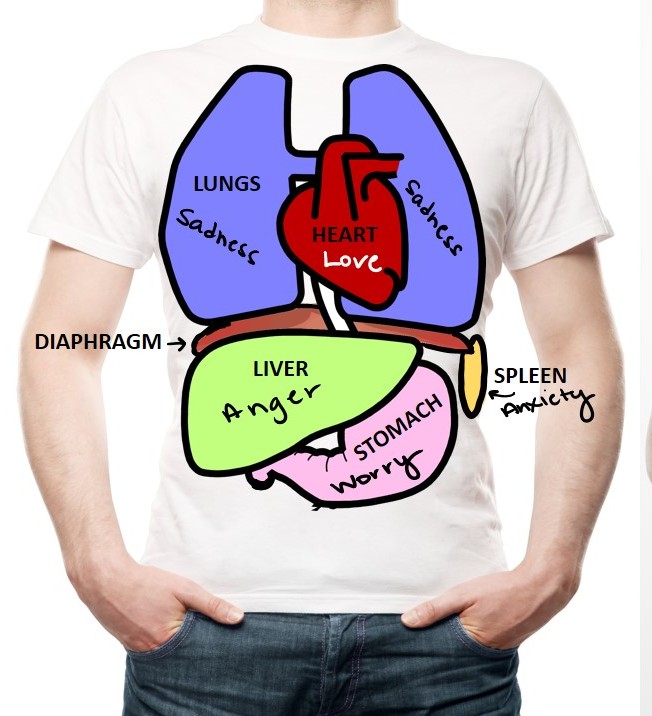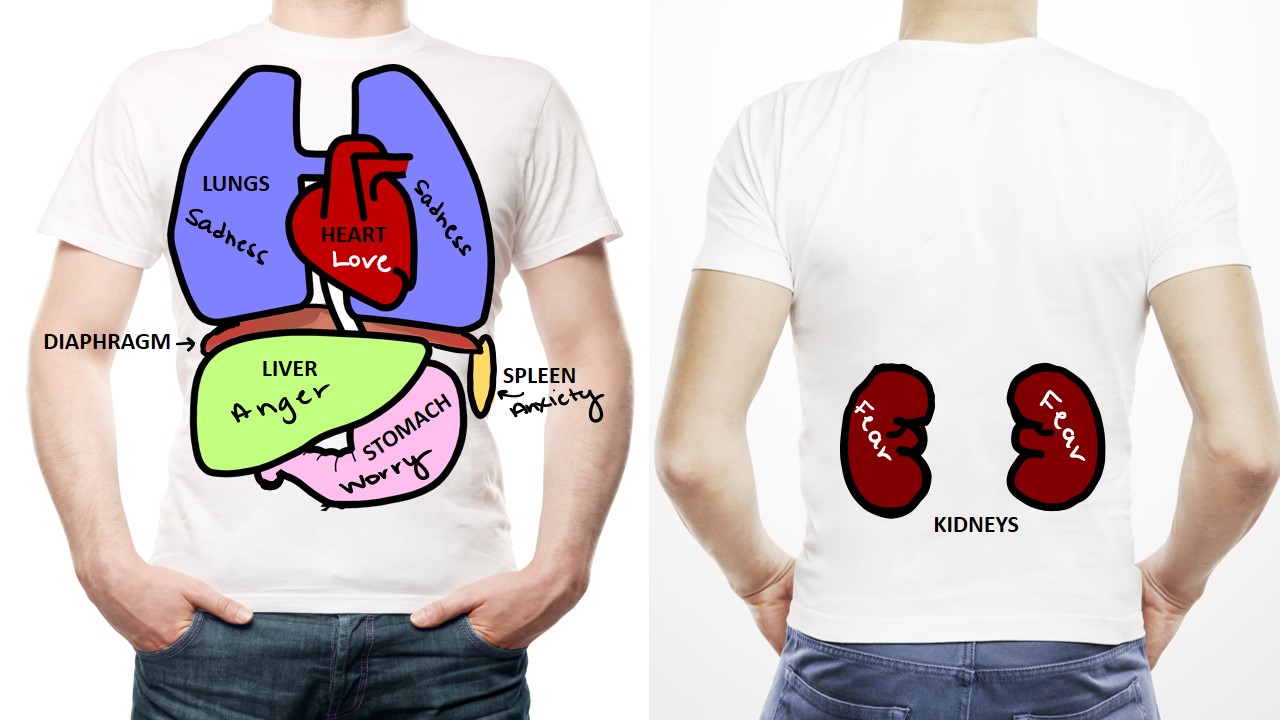One of the most impactful business books I read as a young executive was Who Says Elephants Can’t Dance? by Louis Gerstner, Jr., about his experiences while transforming IBM in the 1990s. After my former boss and mentor, Michael Rapino, recommended it to me, I read the book over and over again. In fact, I read it so many times that my quoting its passages became a running joke in our office. The story moved me. IBM, the once proud giant of American ingenuity, had fallen on tough times. The internal culture of the company had become slow and stagnant with an undercurrent of cynicism. When Gerstner took over he inherited the monumental task of releasing the negative energy and allowing the healthy company inside to emerge. The idea of finding a gem where others saw a tired, old behemoth made my heart dance like the elephant in the book’s title.
I’ve found this analogy helpful in my own understanding of how to deal with stagnant, negative energies in the body. Like IBM, sometimes it feels like we’re a lost cause. Trapped under the weight of a barrage of negative feelings, it seems that no matter what we do we can’t get beyond the thoughts in our head. They hold us back like a particularly toxic department in a company whose employees spend time gossiping at the coffee machine, writing nasty emails, and opposing any form of innovation or new idea. Every company, school, and organization has these energies … and so do our bodies.
Negative energy in our body is often the result of repressed childhood memories – an accumulation of a lifetime of feeling unheard, unappreciated, and unloved. Throughout our childhood we experience these feelings and, because we aren’t safe to express them, we bury them inside, never to be thought about again until they surface in the middle of an argument with our spouse, a challenge at work, as tears in therapy, or after a long night of drinking with our friends. And then we think, “Where did that come from?”
The answer, I’ve found, is that these hidden feelings often come from our internal organs, which store these unresolved emotions.
Eastern philosophy of the body teaches that each organ stores a certain emotion, and that part of maintaining a healthy body is understanding and working with the organ to gently release its pent-up emotion and restore it to a state of joy and ease.
My teachers equipped me with a toolbox that I want to share with you today.
Get to know your organs. As I began to learn about my body, I was amazed at how little I knew about its function … or even its layout. School had taught me a lot about “facts and figures,” but had really underprepared me for the real-life skill of caring for myself.
That changed when I met my teacher Taoist Grandmaster Mantak Chia, who taught me to start by getting to know my body. Master Chia equates the value of knowing the map and function of our bodies to investigators trying to solve a mystery. If we don’t know who’s doing something, where they’re doing it, and why they’re doing it, we’re helpless.
But when we know who, where, and why, we’re equipped to take the appropriate action.
@Thejasongarner (Click to Tweet!)
This process is the same when caring for our bodies. If we take the time to understand which organ is responsible for which emotion, where the organ lives in our body and why its function is important, we have a starting point for achieving the health and wellness we desire. Here’s an image I use as a reference point in getting to know the internal workings of my body.
Breathe. There is nothing more important to our bodies and our emotions as the breath. Beyond the obvious necessity for oxygen, the breath plays an important role in regulating our emotions. First, as a messenger, the breath tells the body that all is well. When we breathe deeply we tell the body it can relax. Why? Think about what happens when you’re facing a threat or a crisis. How do you breathe? Long and relaxed? No, when we’re under attack, whether real or perceived, our breathing becomes more frequent, shallow and frantic – and the body understands this as a sign of stress and responds accordingly. On the other hand, a long, deep breath is a very different sign for the body – a sign that all is well, inviting the body to relax.
The other function that long, deep breathing plays in regulating our emotions is through the relaxation of the diaphragm. Take another look at the body diagram above. Do you see how a constricted diaphragm restricts flow and traps the organ energy in the abdomen? This stagnation causes the emotion to fester, grow, and become increasingly toxic. My teacher Guru Singh taught me to focus on breathing deeply and expanding the diaphragm, causing it to stretch and relax and allow the emotions to release. Think of this as internal yoga for your organs – creating space for health, joy, and wellness to flow in our bodies.
Chinese Herbs. One of the primary benefits of Chinese tonic herbs, as taught to me by Herbal Master Ron Teeguarden, is that they promote proper organ function. The energy of the herbs interacts with our organs, stimulating them to turn on, activating their natural flow and moving the energy trapped inside. Just as we hop on a treadmill in the morning to “get our juices flowing,” the herbs do the same for our organs. And when our organs are flowing, the emotions in them flow too. In this way, flow is a natural disposal system for old emotions to leave our system.
Send love to your organs. Another lesson Master Chia taught me is to smile at my organs, literally. Once you know where your organs are and what feelings they store you can direct messages of love and kindness to them. Watching Master Chia meditate is contagious. He sits with a big smile on his face, sending love one by one to his organs and then to his entire body.
Meditation. The final step for me in comforting pent-up emotion in my body is a meditation that combines all we’ve discussed above, which I’d like to invite you to join me in practicing today.
Let’s start by looking at the body diagram and refreshing our understanding of the body. With that image fresh in our minds, sit comfortably, close your eyes and breathe … focusing on the diaphragm. Just relax and breathe for a few minutes — long, deep breaths — feeling the diaphragm expand and contract, moving up and down. If your diaphragm is tight (most of ours are), try adding the message “you are safe” and feel how your diaphragm responds. This always helps me relax.
When you’re ready, place your hands on your lower back and focus your awareness on your kidneys. They are the organs that store fear. Smile and send them thoughts of safety, stability, and comfort. Breathe deeply and imagine the kidneys relaxing into the love you’re sending them and feel the fear slowly melt away. Next move your hands around to the right side of your abdomen to the liver, which stores anger. Become aware of the liver and feel any anger that you’re holding. Don’t grab onto the anger, just be aware of the feeling. Breathe deeply and smile into the liver with the message, “All is well. I understand you. I appreciate you.” Breathe a few times.
When it feels right, move your hands to the opposite side to the spleen, which is the organ of over-thinking and anxiety. Breathe deeply, smile at the spleen and send it messages of confidence and safety, give it permission to let go and settle down. Then move your mind and your hands to your stomach. This is where worry lives in our bodies. Can you feel it? Smile to your stomach, breathe really deeply … do it a few times because we all have a lot of worry to release. Say, “It’s okay. I hear you. We’re in this together. All is well.” Really feel these messages as they travel to your stomach. Invite the worry to move on.
Place your hands on your lungs. Acknowledge the sadness that lives there. Breathe and fully expand your chest. Allow yourself to just feel whatever feelings you become aware of. Be gentle. Say, “I love you … I’m sorry for your pain … I’m here for you.” Breathe some more. And finally place both hands on your heart – give your heart a loving hug. This is where love and joy reside. In this meditation, we’ve stimulated all the stagnant, dormant energy of fear, anger, anxiety, worry, and sadness and we’ve slowly brought it to the surface, to the heart; and now, with a deep breath and a smile into our hearts, we convert those emotions to the energy of love that we send back into our body and out into the world. Breathe and feel the love radiating to every organ of your body. Feel it in your kidneys and in your liver. Breathe again and experience love in your spleen. Breathe once more and savor the warm sensation of love that replaces the feelings of worry and sadness in your stomach and lungs. For a few moments just enjoy the experience of being loved from the inside out.
The story of the turn around of IBM taught me an important lesson in business — that we can change the culture of a company and allow even rigid old elephants to dance.
I’ve learned the same is true in life — that we can change the culture of our bodies and allow our organs to dance in harmony with the love song of life.
This week I invite you to breathe deeply and frequently … to connect again and again with the feelings of your organs … to release the fear and pain … and to allow yourself to be deeply, truly loved.
Big hugs of love,
Jason
Jason Garner is the author of the new book, … And I Breathed, My Journey from a Life of Matter to a Life That Matters. Jason is a husband, father, former Fortune 500 company executive, and spiritual student who spent the first 37 years of his life working his way up from flea market parking attendant to CEO of Global Music at Live Nation — never taking a breath in the belief that to be loved he had to be the best. He has worked with rock stars and sports legends and was twice named to Fortune magazine’s list of the top 20 highest-paid executives under 40. A series of events centering on the sudden death of his mother from cancer caused him to re-evaluate what really mattered in life … and to finally breathe. You can find more info on his website and follow him on Twitter or FB.













